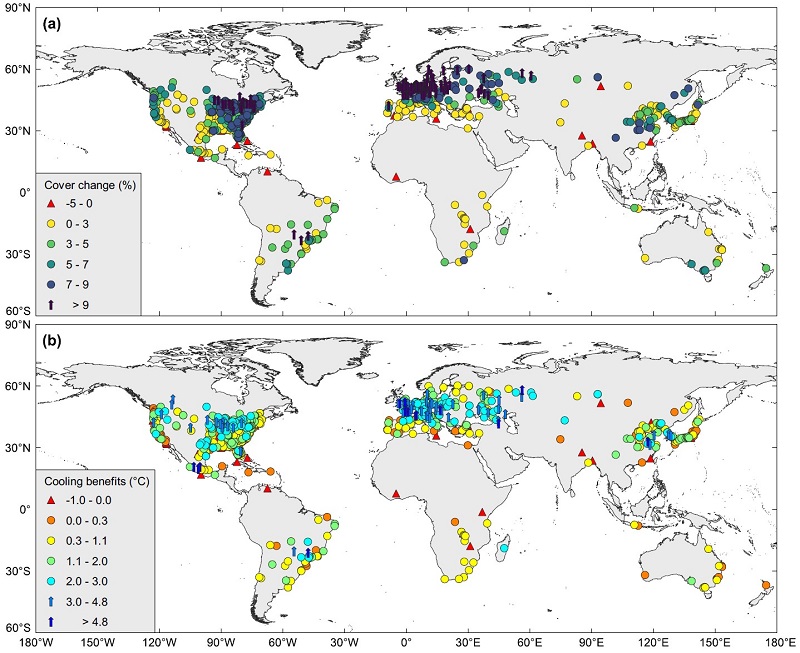

The latest issue of Global Change Biology published a work titled “Satellite-based evidence highlights a considerable increase of urban tree cooling benefits from 2000 to 2015” which is leaded by Prof. Donghai Wu in South China Botanical Garden, Chinese Academy of Sciences and Prof. Xiang Zhao in Beijing Normal University (https://doi.org/10.1111/gcb.16667). This work mainly found that more than 90% of analyzed global cities showed an increasing trend in tree cooling efficiency (TCE) during 2000 and 2015. These results are offering new insights into the use of urban afforestation as an adaptation to global warming and urban planners may leverage them to provide more cooling benefits if trees are primarily planted for this purpose.
This study used Landsat-based tree cover and land surface temperature (LST) to compare TCEs at a reference air temperature and tree cover level across 806 global cities and to explore their potential drivers with a boosted regression tree (BRT) machine learning model. The results showed that TCE is spatially regulated by not only leaf area index (LAI) but climate variables and anthropogenic factors especially city albedo, without a specific variable dominating the others. However, such spatial difference is attenuated by the decrease of TCE with tree cover, most pronounced in midlatitude cities. During the period 2000- 2015, more than 90% of analyzed cities showed an increasing trend in TCE, which is likely explained by a combined result of the increase in LAI, intensified solar radiation due to decreased aerosol content, increase in urban vapor pressure deficit (VPD) and decrease of city albedo. Concurrently, significant urban afforestation occurred across many cities showing a global city- scale mean tree cover increase of 5.3 ± 3.8% from 2000 to 2015. Over the growing season, such increases combined with an increasing TCE were estimated to on average yield a midday surface cooling of 1.5 ± 1.3°C in tree-covered urban areas.


